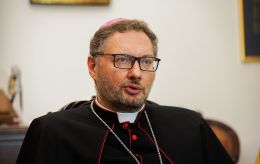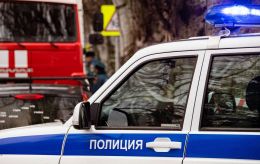Noble estate turned into unique museum: Why you should visit Grocholski palace in Ukraine
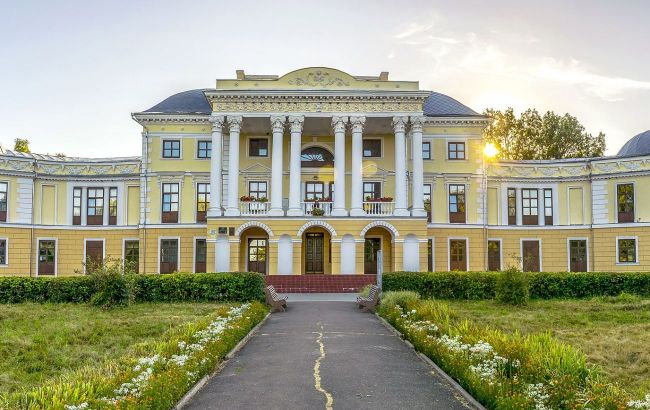 Why you should see the Grocholski Manor in Voronovytsia (photo: Wikipedia)
Why you should see the Grocholski Manor in Voronovytsia (photo: Wikipedia)
The Grocholski palace in Voronovytsia is one of the lesser-known but remarkably elegant architectural landmarks of the Vinnytsia region. Built in the 18th century for the powerful Grokholski family, this estate has witnessed changes of eras, owners, and even functions. Today, the palace houses a unique aviation history museum, making it an interesting spot on Ukraine’s tourist map.
RBC-Ukraine tells what is known about the Grocholski Palace, where it is located, and its history.
History of the palace
The palace in Voronovytsia (Vinnytsia region) was built in the 1770s–1780s for members of the prominent Polish noble family, the Grocholski.
The estate became one of the most prestigious manors in Podillia. Its architecture reflects early classicism with elements of Baroque, visible in the symmetry of the facades, the columns, and the delicate decorative details.
At different times, the palace served not only as a magnate's residence but also as a center of cultural life. Social gatherings, concerts, and events were held here, and the estate was considered a model of a noble lifestyle.
After the fall of the Polish-Lithuanian Commonwealth, the estate went through difficult times — owners changed, and the building deteriorated — but it was preserved. During the Soviet era, the palace was used for various institutions, and by the mid-20th century, it found new life.
Architectural features
The palace was built in the shape of the letter P (a Ukrainian letter П - ed.). The central building is adorned with a colonnade and a pediment, giving it a monumental appearance. Nearby, there was once a sprawling park with fountains and avenues — parts of it have survived to this day.
Inside, visitors can see a spacious ceremonial foyer, high ceilings, and halls that retain the spirit of the 18th century. Most of the decorative details have been lost, but the architectural framework has remained almost unchanged.
The palace contains 43 rooms, with historical interiors preserved in the round and oval halls. Although the park was partially destroyed, some of its former beauty still remains.
Nearby, Franciszek Grocholski built a church. The estate also included service buildings and Cossack stables that could accommodate up to 100 horses.
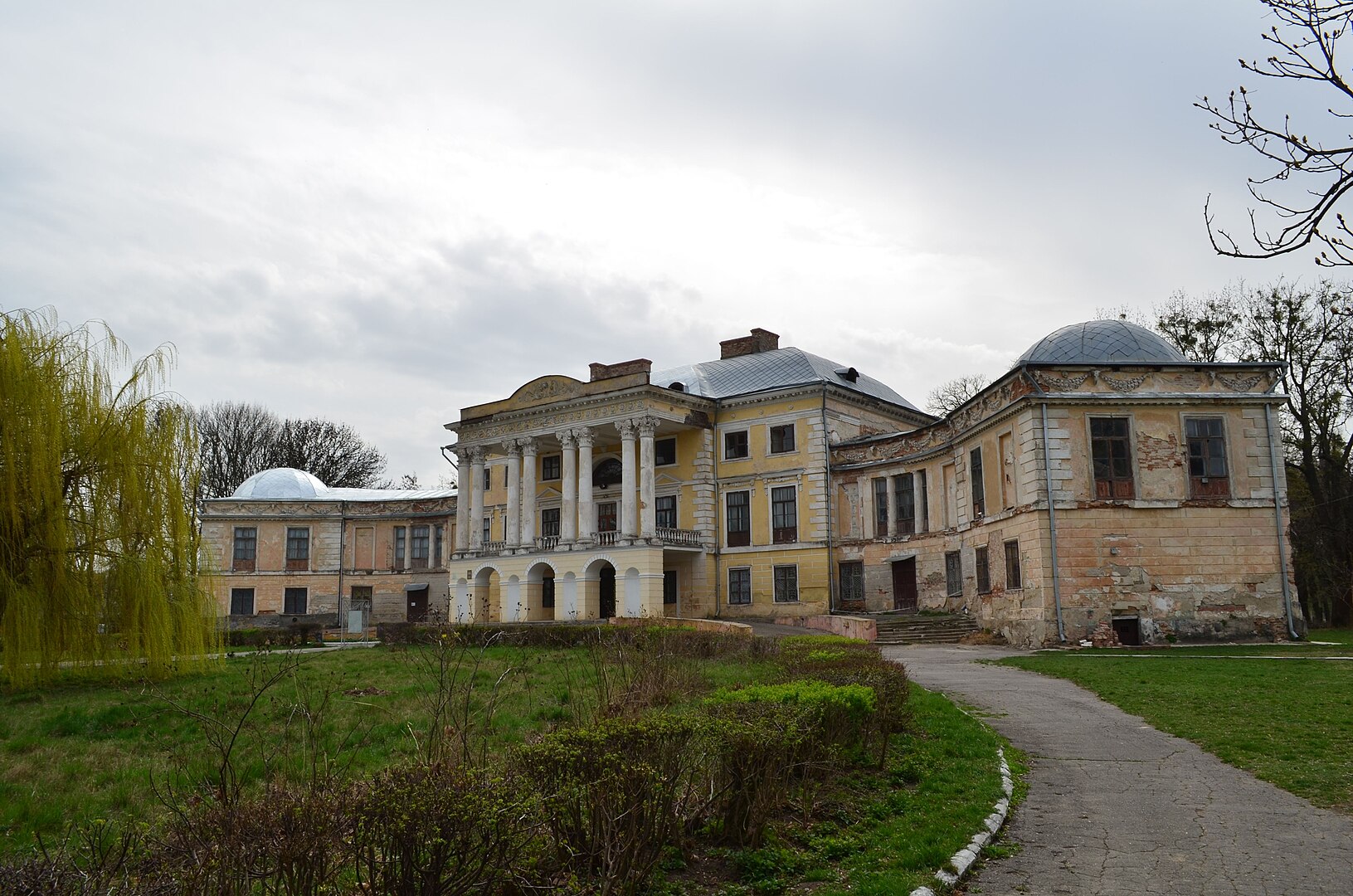
Grocholski Palace (Photo: Wikipedia)
Life of the palace over the last 200 Years
After the 1817 renovation, the main building of the palace and its right wing were rebuilt. Many of the halls had walls covered with mosaics, while others were decorated with silk and satin.
Grokholski brought a large collection of paintings to the palace, acquired during his travels abroad. The collection included 519 works by Flemish, Dutch, and French masters, as well as by Titian and his students.
Franciszek Grocholski’s grandson, Adolf, participated in the November Uprising of 1831. The rebellion ended in defeat, and Adolf was exiled to Siberia. A few years later, he returned and prevented the confiscation of the estate.
After Adolf’s death, the palace passed to his brother Ludgart, who took part in the Polish January Uprising of 1863 against the Russian Empire.
While Ludgart was saved from arrest by the Cossack Ivan Mistota, the estate itself was confiscated by the Russian government. Under the 1865 law, only Russian subjects were allowed to purchase such estates.
The palace was bought by Mykola Mozhaiskyi, the brother of Oleksandr Mozhaiski, the aviation pioneer. After Mykola’s death, the palace passed to Oleksandr.
It was within the walls of this estate that he developed a model of the world’s first airplane. Soviet propaganda claimed that this plane made the first successful flight.
In reality, however, aircraft models had been developed before Mozhaiskyi, and his design was closer to modern airplanes.
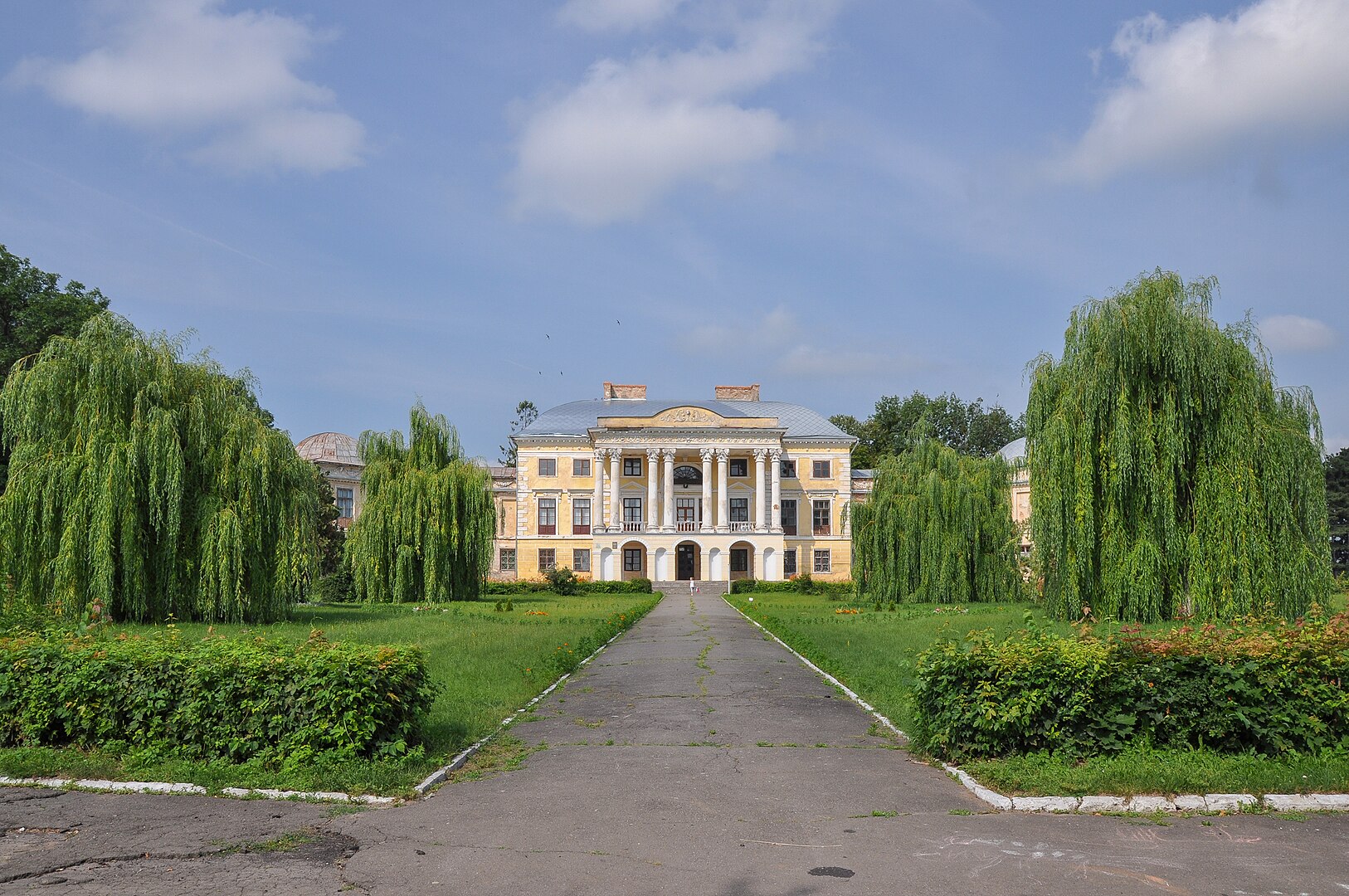
Grocholski Palace (Photo: Wikipedia)
Mozhaiskyi’s model was unsuccessful, as its excessive weight and poorly thought-out design prevented the aircraft from fully taking off. The first true airplane flight was carried out by the Wright brothers in 1903.
During the Soviet era, the palace housed a revolutionary committee, a police station, and later a dormitory. For some time, parts of the building were used as a school, and eventually, a section of the palace was turned into an aviation history museum.
Modern life of the palace
Today, the palace houses the Museum of Aviation and Cosmonautics, considered the first specialized museum of its kind in Ukraine. The same palace also hosts a museum dedicated to the kobzar V. Perepelyuk, an arts school, and a library.
The museum’s exhibits combine the history of the palace with scientific achievements. Visitors can see models of aircraft, archival documents, and materials devoted to the development of aviation.
You might be interested in:
-
The most beautiful waterfalls in Ukraine that are worth seeing in person.
-
Which historic palace impresses even seasoned tourists with its grandeur.
Sources: Institute of History of Ukraine (NANU), Ukrainian Architectural Heritage Database, Vinnytsia Regional Museum of Local Lore, Ukraina Incognita, Vandrivka.
